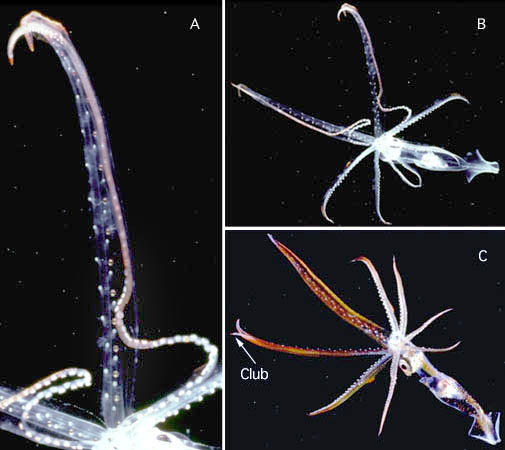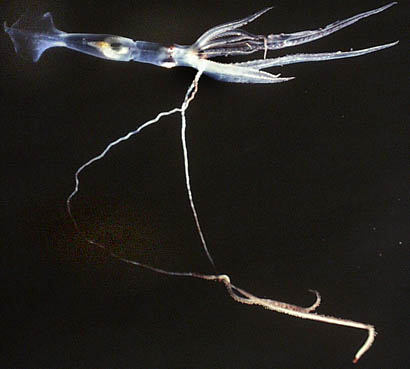The lateral membranes of arms IV (i.e., the tentacular sheaths) in Chiroteuthis are very large and serve to hold the tentacles when retacted and the base of tententacles when extended. Hunt (1996) has observed Chiroteuthis calyx in laboratory aquaria feeding on brine shrimp. When a brine shrimp ran into the tentacular club, it was grabbed by the suckers and the tentacle retracted up the tentacular sheath until the other arms could grab the prey and pass it to the mouth. The tentacles were then redeployed out the tip of the ventral arms.


Figure. Chiroteuthis veranyi in a shipboard aquarium. A - Enlargement of Fig. B showing the tentacle being held by the sheath. Note the club at the distal end. The base of the tentacle lies outside the sheath presumably due to the abnormal conditions within the aquarium. Note also the numerous pad-like photophores on the tentacular stalk. B - Low magnification of Fig. A to show general orientation. C - The same squid with the tentacle neatly enclosed in the sheath. Photographs by Ron Gilmer, courtesy of Rich Harbison.


Figure. A young Chiroteuthis picteti in a shipboard aquarium. The delicate nature of the partially retracted but disloged tentacles is apparent and they might easily become entangled width one another. This suggests why the large tentacular sheaths are needed in this genus (i.e., to control the dangling tentacles and keep them separated). Photograph by R. Young.




 Go to quick links
Go to quick search
Go to navigation for this section of the ToL site
Go to detailed links for the ToL site
Go to quick links
Go to quick search
Go to navigation for this section of the ToL site
Go to detailed links for the ToL site